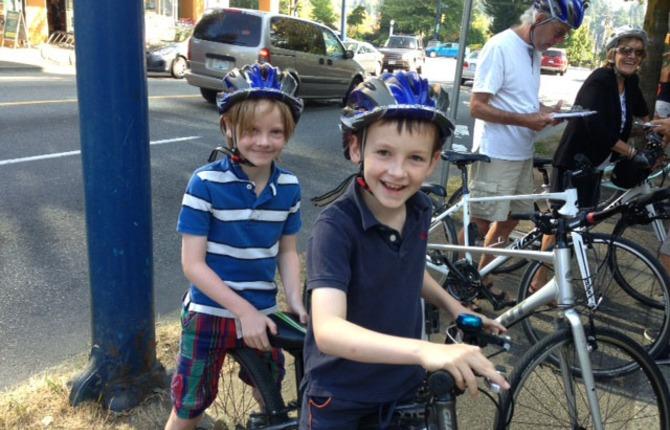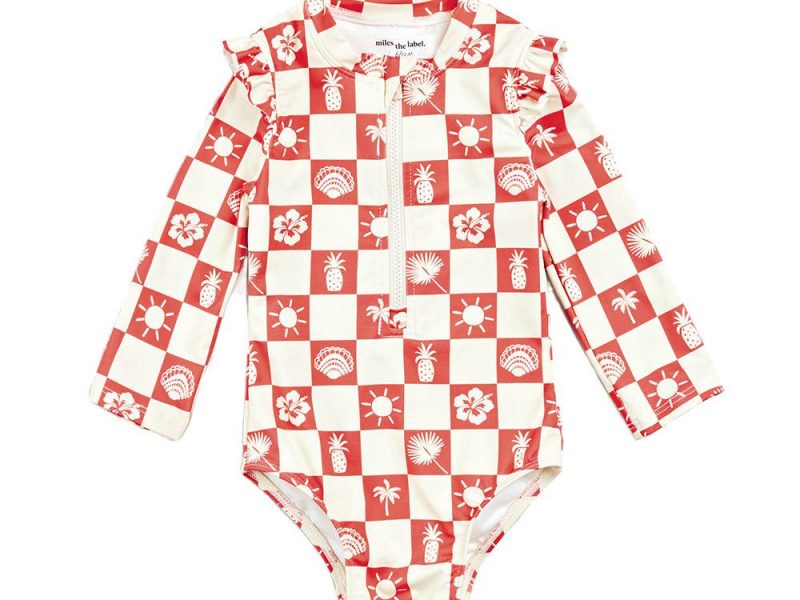
Eco-kids Vancouver
By Liz Campbell
Spokes Bicycle Shop is busy this morning as groups of cyclists get fit out with bikes. And in the midst of this bustle, the Bushell family, visiting from England, calmly dons their helmets. They have patently done this before.
“Cycling is such a great way to get to know a place." says Kirsty Bushell. “We did this last year when we went to Sydney as well. You see so much more and it keeps us active while we do it.”
Her sons, Alexander (age 10) and Rory (age 9), have no trouble keeping up with our little group of pedalers as we explore Vancouver at cycle speed. Indeed, Alexander remains firmly at the front.
Cycle City’s tour of Vancouver begins on the edge of Stanley Park with bicycles, helmets and Nick, a knowledgeable tour guide. This park is the largest city park in the world, and according to Trip Advisor, the best, he tells us.
As we survey the iconic totem poles here, Nick describes a little of the history of the first
nations of this area. "Carved from giant red cedars, these poles represent the 1000-year old art styles of first peoples from Alaska to Oregon," he explains. "British Columbia has undertaken to rename many waterways and villages, giving them back their native names. For example, the Georgia Strait is now the Salish Sea."
He goes on to explain that nearby Deadman's Island got its name because the Squamish used to hang their dead in cedar boxes from the trees on the island. Little tidbits of information like this keep the boys attentive.
The trail takes us through towering trees. Before extensive logging in the 19th century, these covered the whole area. Some are so huge, one could climb inside them, and indeed, when we stop near an enormous stump, the boys do! And on top of them!
At Beaver Lake, Nick explains how the beavers keep trying to dam their little stretch of water and how the park wardens have created 'the beaver baffler' a netting system to prevent them from succeeding in blocking the waterway. Rory is hoping to spot a stray beaver, but our guide explains they are nocturnal for the most part.
The five hour tour winds through the city, remarkably remaining on bike paths nearly all of the time. Vancouver is a wonderfully accessible city; walking, cycling and public transit allow easy access everywhere.
At lunch time, we cross with our bikes by water taxi to Granville Island. Here, the Kid's
Market has everything from an active play area − the Adventure Zone − to shops selling really terrific and unique toys. Most of our group enjoys the free entertainment provided -by buskers while we munch on grab-and-go meals from the main market. And of course, our tour must pay a call on 'The Giants'.
Recently unveiled, the six huge concrete silos at Ocean Concrete have been transformed by OSGEMEOS – famous Brazilian graffiti artists and twin brothers, Gustavo and Otavio Pandolfo – into a colourful piece of public art, cheerfully dubbed 'The Giants.'
But these six are of the Friendly variety. With pants buttoned awkwardly and colourful shirts, they can be seen from both the water and land sides, and make a colourful welcome to Granville from the water taxi.
Taking to the water is very much a part of Vancouver life. "We found some great ways to get to know the area," says Kirsty. "Yesterday, we went ocean kayaking and the boys loved it. We saw some seals close up." Kayaking is a wonderful way to explore False Creek, to admire the impressive skyline of downtown Vancouver, and to get pretty close to the resident harbour seals.
But this is patently an adventurous and active family. For the less active, but equally adventurous, the Vancouver Aquarium is a terrific ways to explore the water world.
I watch as children press their faces to the enormous glass tanks, getting up as close as
they can to enormous, colourful jellyfish and anemones, and giant, white belugas, unhurriedly swimming through the blue water.
They aren't the only slow-moving creatures at the Aquarium. I hear children squealing with delight as the huge sloth in the Graham Amazon Gallery painstakingly makes her way down a tree to help herself to lunch from a basket hung nearby. "They rarely move so you're lucky to see this," explains a docent, and adds to the delight of the children listening, "And she only poops about once a week. You can imagine how big that is!"
We watch the staff playing with dolphins in an enlightening demonstration that explains some of the important research being done with these creatures. Indeed, the information provided by docents, and through exhibits and demonstrations throughout the day, stress the conservation message.
The Vancouver Aquarium has been at the forefront of rescue and protection of sea creatures as well as spearheading Ocean Wise, a program to encourage restaurants and consumers to make eco-friendly choices when shopping for fish and seafood.
It's a message restaurants like The Fish House in Stanley Park have taken to heart. Here we sit on a sun-warmed terrace overlooking the water and enjoy a glorious lunch of locally caught fish. Words like local, sustainable and eco-friendly are everywhere on menus in this green focused city.
Indeed, Vancouver, with its cycling lanes and effective public transit is a poster child for the environmental message. Exploring this family-friendly city with children offers lots of fun with endless opportunities to teach and encourage green practice.
If you go:
Cycle City Tours: food, beer, and full city tours: www.cyclevancouver.com
The Vancouver Aquarium: online activities are also available: www.vanaqua.org
Ocean Wise(www.oceanwise.ca) has a free app for your mobile phone when shopping
Lunch: Try The Fish House in Stanley Park. Great kids menus and sustainably caught fish.www.fishhousestanleypark.com
For more ideas: www.vancouvertourism.com







